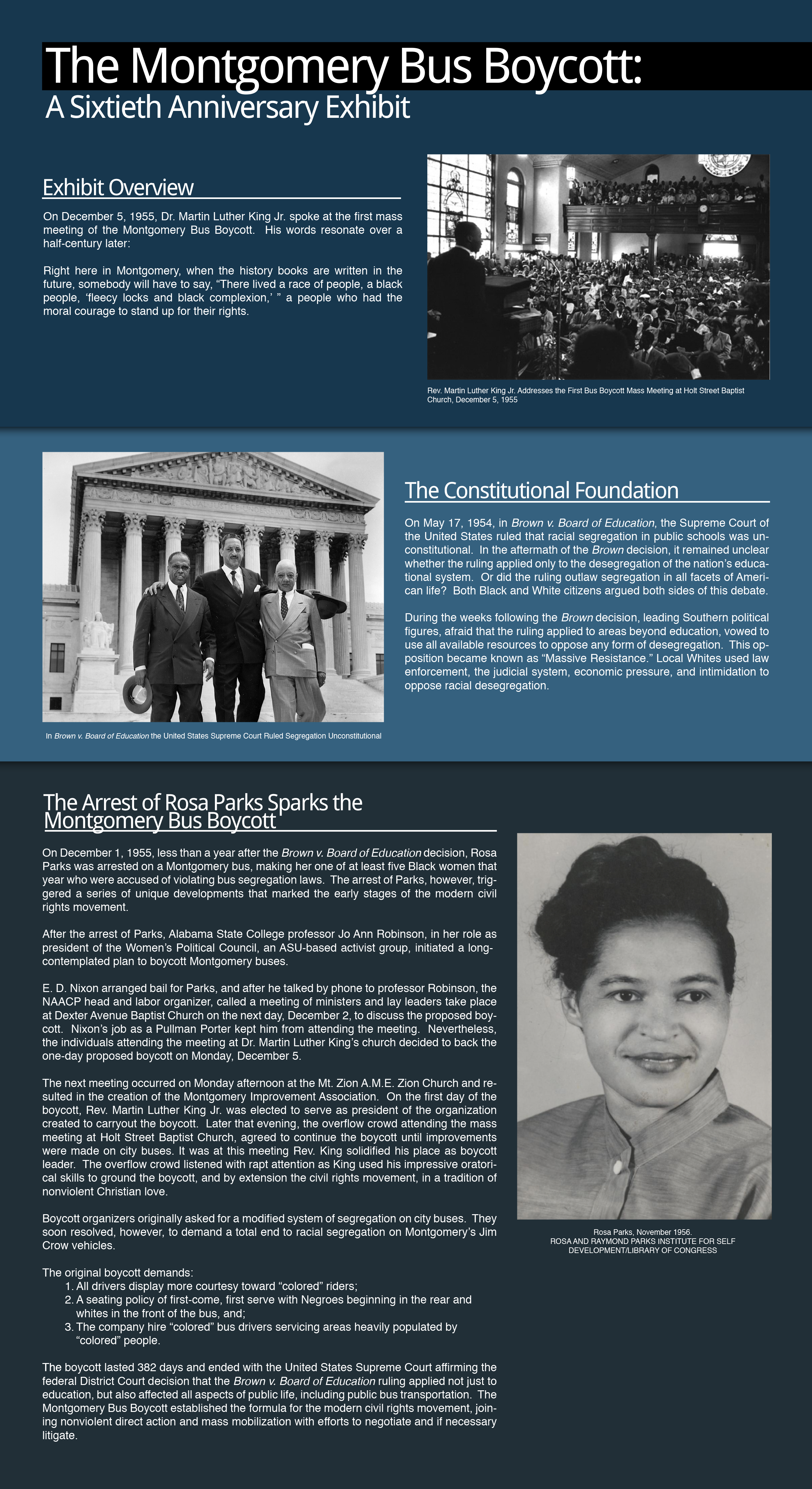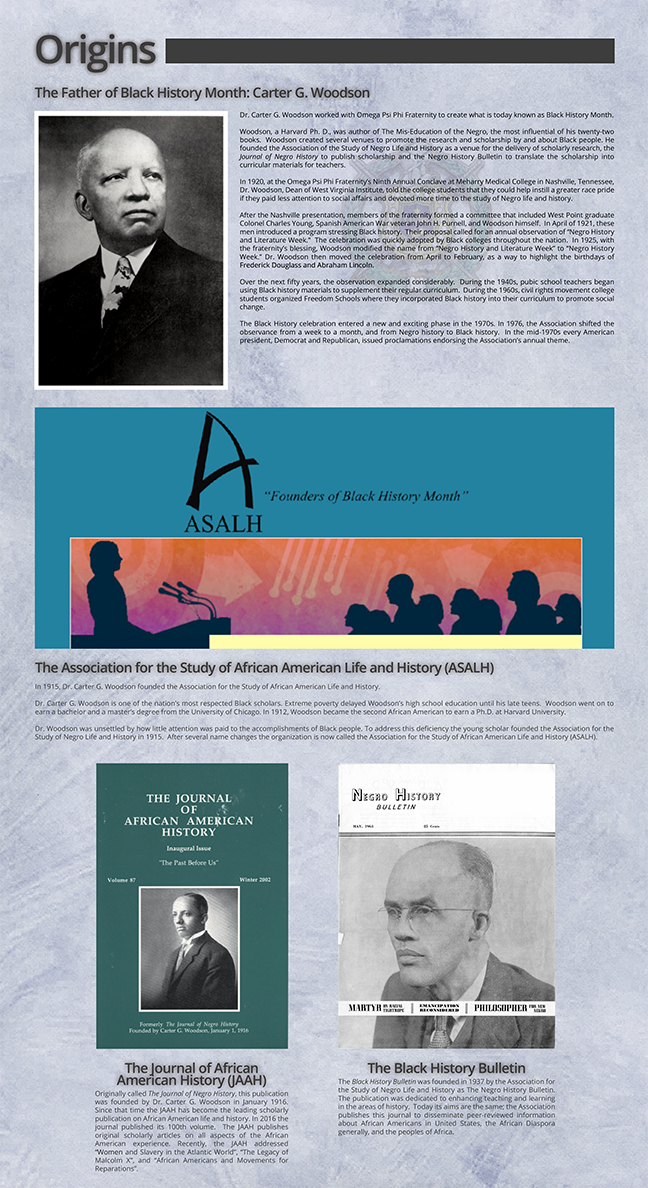MLK @ ASU
This three-panel traveling exhibit was created in 2016, and sheds light on the close connection between Rev. Martin Luther King, Jr. as pastor of the Dexter Avenue Baptist Church, and Alabama State University’s administration, faculty, staff, and students. Often referred to as the “college church” because of the large number of college affiliated people in the congregation, the exhibit explores the deep connection between the church and the school, as well as Rev. King’s frequent presence on campus activities.
The Montgomery Bus Boycott
This three-panel traveling exhibit was created in 2015, and traces protests against segregated public transportation in Montgomery, Alabama over the twentieth Century. The exhibition introduces the Montgomery Trolley protest of 1900, and then explores the events leading up to and including the Montgomery Bus boycott of 1955/56, a protest which successfully desegregated Montgomery public buses, while also helping to launch the direct action phase of the Modern Civil Rights Movement.
WAPX Radio Station Takeover
This three-panel traveling exhibit was created in 2023, and details the October 1974 takeover of WAPX Radio Station by African American radicals in Montgomery, Alabama, and their on-air announcement that the “Revolution Has Begun.”
Selma to Montgomery March
This six panel traveling exhibit was created in 2015, and provides an overview of the 1965 Voting Rights campaign, and how protests emerged in Selma, Montgomery, and then spread throughout the Alabama Black Belt. The front three panels of the exhibit address the goals and activities of Martin Luther King, Jr. and the Southern Christian Leadership Conference (SCLC). Alternately, the back three panels shed light on the role played by the Student Nonviolent Coordinating Committee (SNCC), and the participation of thousands of student activists, including students from Alabama State University, nearby Tuskegee University, and students from schools throughout the nation.
Black History Month & ASU
This-three panel traveling exhibit was created in 2016, and explores the origins, purpose and development of Black History Month in the United States of America. After establishing the evolution of the celebration nationally, the exhibit draws particular attention to the celebration in Alabama, and the pivotal state-wide role played by individuals at Alabama State University.
Jo Ann Robinson
This-three panel traveling exhibit was created in 2022, and sheds light on how the Women’s Political Council (WPC) initiated the Montgomery Bus Boycott. The exhibition highlights Alabama State University Professor Jo Ann Robinson, as president of the WPC, and her role as the moving force behind transforming Rosa Parks refusal to give her bus seat to a White Man, into a city-wide, year-long successful boycott that overturned racial discrimination on Montgomery city busses.
Nat King Cole
This exhibit highlights the life of celebrated entertainer Nat King Cole, who was born in a house now located on the campus of Alabama State University (ASU). The house, which was once located in the all-Black Bel-Aire neighborhood, was moved several blocks north to make way for construction of the ASU football stadium. It is now located at the corner of Harris Way and Pineleaf Drive on the campus of Alabama State University.
The-six panel exhibit and the house museum on the ASU campus, both honor an African-American who entertainer who rose from humble beginnings in the segregated Deep South to become an internationally acclaimed jazz pianist, singer, songwriter, and actor. As the first African-American to host a nationally televised variety show, Cole would go on to achieve international acclaim, while breaking barriers that previously hindered talented African-American performers.
From Lincoln Normal School, a Precursor to Alabama State University
This four-panel traveling exhibit was created in 2023, and explores the 1867 origins of the Lincoln Normal School in Marion, Alabama. The exhibition highlights how the school evolved into Alabama State University, which was relocated to Montgomery, Alabama in 1887. The exhibition also uses photographs provided by the University of Alabama to trace the continuation of education for African American youth in Marion after the school’s removal to Montgomery.









